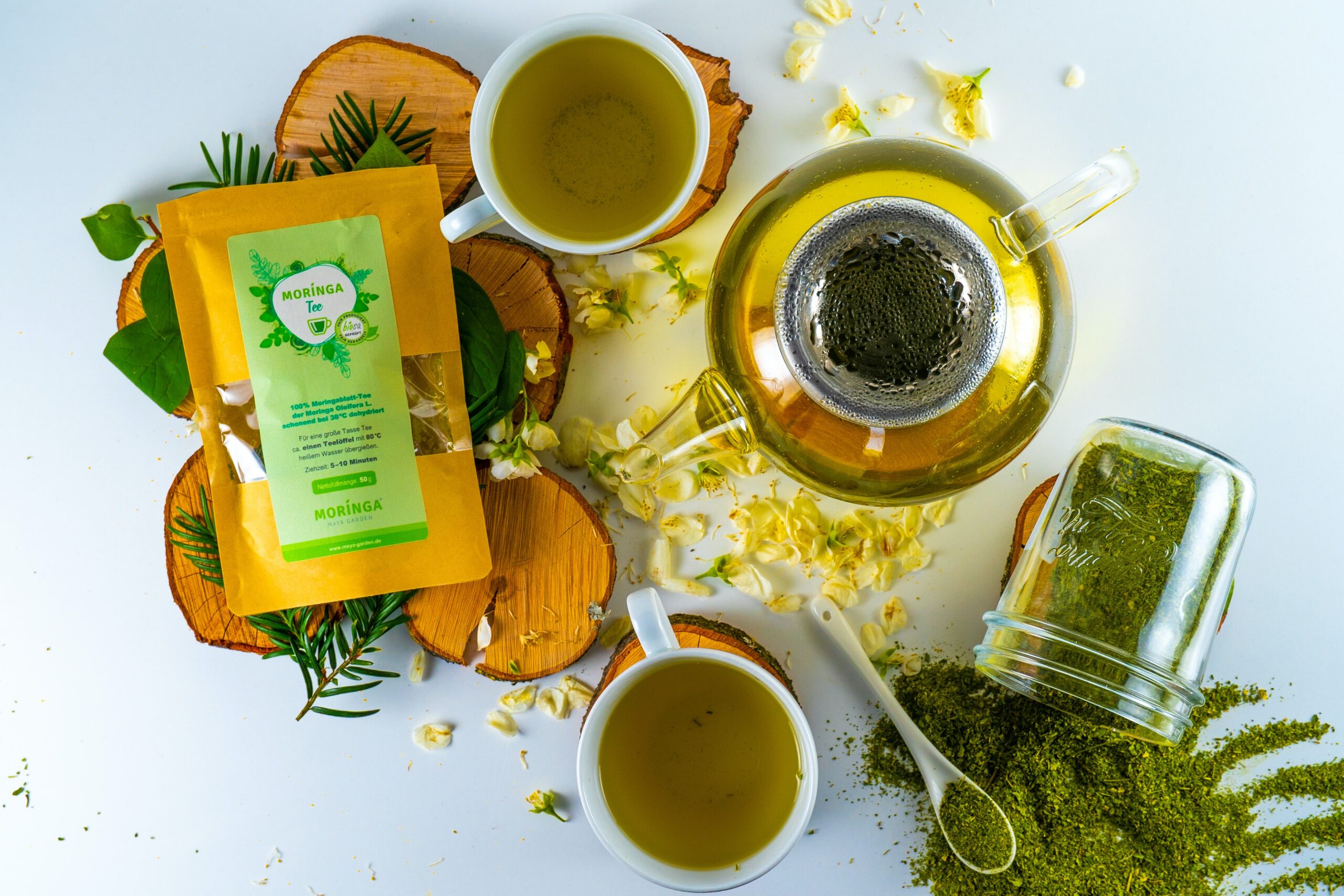Moringa is a resilient crop that can survive in the often harsh and unpredictable climate of Southern Africa because of its drought resistance. Farmers, who may have trouble growing other crops due to the harsh climate, may find this to be an ideal crop.
Environmental factors
When it comes to plant and tree distribution, growth, and productivity in their natural environments, temperature is a major factor. The optimal conditions for moringa seed germination and subsequent growth are temperatures between 20 and 30 degrees Celsius. Moringa thrives in the hot summers and mild winters typical of tropical and subtropical regions. Fruit set is optimal at temperatures between 30 and 35 degrees Celsius, and becomes stunted at temperatures below 15 degrees Celsius.
Even though high temperatures are best for growing moringa, the plant can still yield results at lower temperatures. When exposed to cooler weather, moringa can thicken its leaves to keep warmth in, but it is sensitive to frost. Growing moringa seedlings in greenhouses and then transplanting them after winter is common practise in temperate regions. Moringa trees require annual precipitation of 250 mm to 1 500 mm. Metabolic pathways and temperature play a role in controlling photosynthesis, growth, and respiration. Researchers in South Africa studying moringa growth at NTL Baraka Ecofarming, found that seasonal changes impacted gaseous exchange. Sub-stomatal CO2 concentrations rose during the summer, when stomatal conductance, transpiration, and photosynthetic rate all fell.
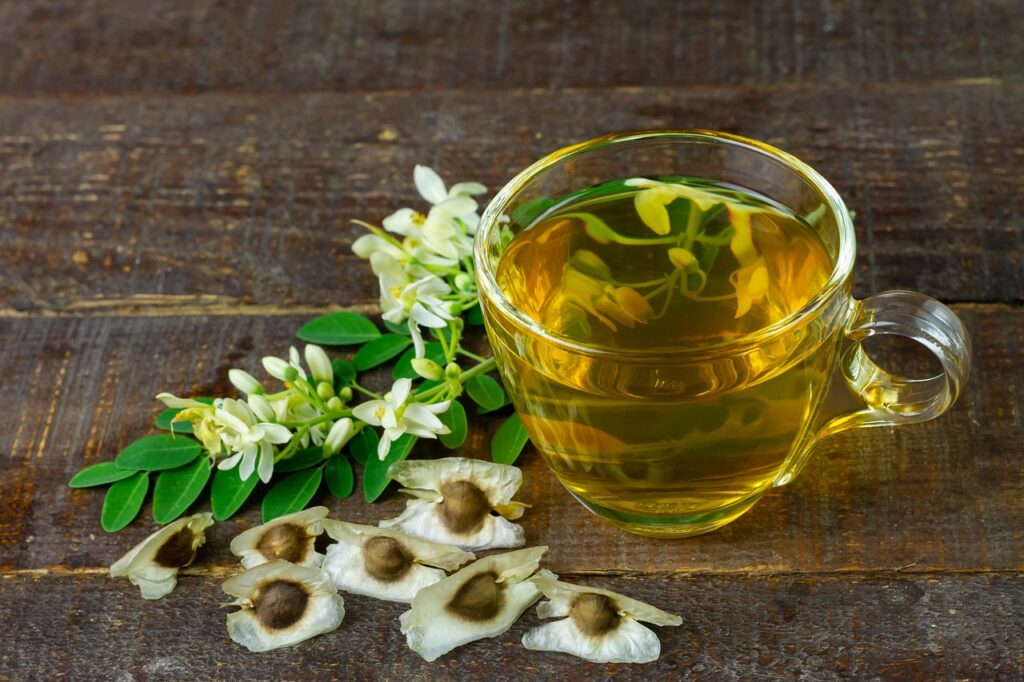
Tea can be brewed from moringa leaves. (Source: pexels by Ninetechno)
Fun fact
Moringa plants can take in carbon dioxide at a rate 55 times higher than that of Japanese cedar trees and 20 times higher than that of common vegetation. In this way, growing moringa could contribute to international efforts to lessen the effects of climate change and adapt to them.
Importance of soil, water, and nutrients
Moringa can survive in low-nutrient environments. When fertilisers are cut back or eliminated, moringa growth slows down. Fertiliser applications are highly recommended in regions with low precipitation and high temperatures. To prevent root rot, moringa trees need sandy loam soils with good drainage. The biomass of seedlings grown in clay and sandy soils is slightly greater than that of seedlings grown in calcareous and loam soils. Moringa’s long tuberous taproot is able to absorb water and minerals from the soil even during dry periods.
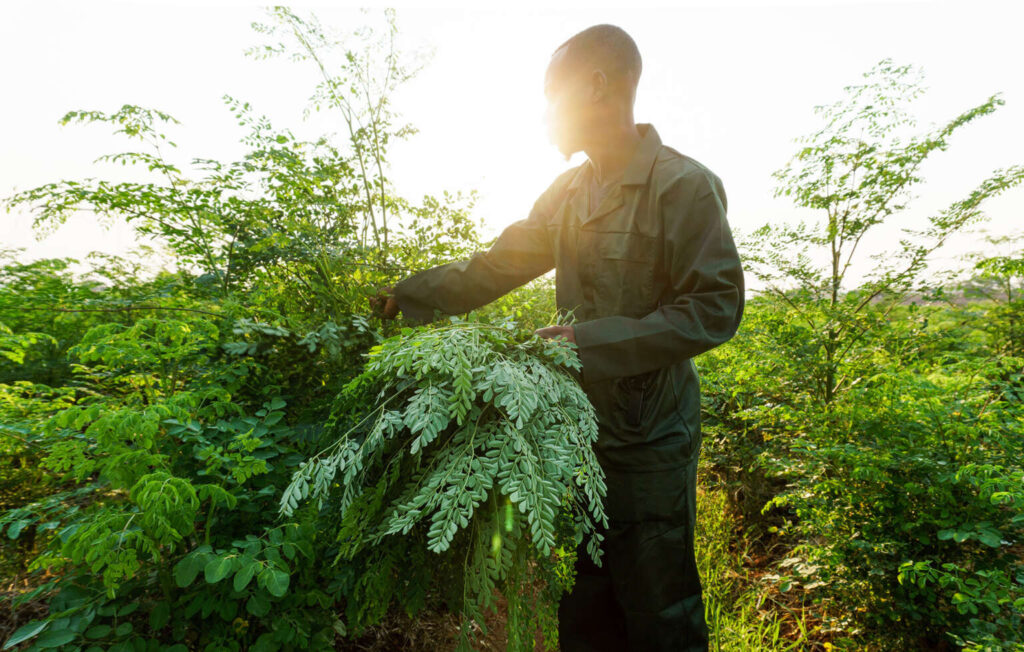
(Source: moringainitiative.com)
Planting, density, biomass, and capacity of plant storage
The production of seeds is best at low planting densities, while the production of leaves is best at high densities. Moringa’s flowering and ripening cycles are disrupted by heavy pruning. When the moringa plant’s stem is soft, it can be harvested mechanically at a height of 0,5 metres above the ground. When storing moringa seeds, it is important to keep them at the proper temperature, moisture level, and age. When stored in paper or aluminium bags at a temperature of -19 to 4 degrees Celsius for up to 6 months, moringa seeds will maintain their nutritional value and viability. It is recommended that farmers keep their seeds in paper bags with a moisture level of less than 8% for up to 12 months at temperatures below 20 degrees Celsius.
Seeds can be kept in their fruits for up to a year if they are kept in a cool, dry place. Seeds should be dried for 30 days before being stored in airtight containers to ensure quality. Moringa leaves retain their nutritional value even after being stored for long periods of time.
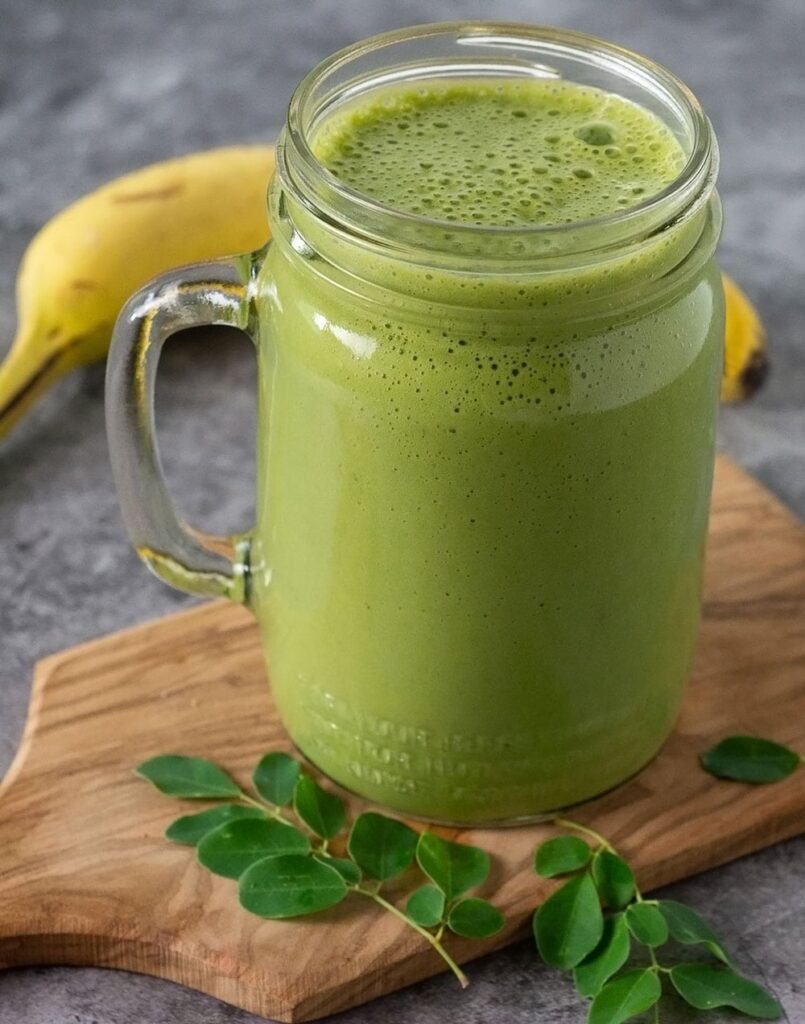
Even nutritious smoothies can be made with moringa. (Source: healthiersteps.com)
Food made from moringa
In order to combat malnutrition, moringa is included in some diets, especially those of infants and nursing mothers in developing countries. It is anticipated that moringa consumption will increase in Southern Africa. Farmers plant moringa for profit, health, and nutrition. Dried moringa leaves from South African ecotypes contain 30,3% crude protein, 0,3% phosphorus, 0,5% magnesium, 490,0 mg/kg iron, 0,6% sodium, 13,0 mg/ kg zinc, 1,5% potassium, 8,3% copper, 86,8 mg/kg manganese, 0,6% sulphur, and 363,0 mg/kg selenium.
The leaves contain high quantities of vitamin E and beta-carotene in addition to the 19 amino acids and 17 fatty acids. It also outperforms common local crops like spinach (Spinacia oleracea), cabbage (Brassica oleracea), peas (Pisum sativum), and broccoli (Brassica oleracea var. italica) in terms of calcium and magnesium content. Other vital nutrients were also found in moringa leaves at concentrations similar to those found in vegetables. Incorporating moringa into common foods may help people realise that it can be used for more than just medicine. Foods made from moringa are associated with the lower income classes in Southern Africa, despite their high nutritional value. Therefore, moringa products are underutilised at the moment. It is important to spread the word about the health benefits of moringa.
In addition to processing equipment and food distribution networks, guidance and training are needed. It is necessary to conduct further studies on the benefits of the different parts of the plant. Moringa is well-known all over the world for its many useful parts, including its flowers, seeds, immature pods, fresh leaves, and as a water filter (seeds). Some of these applications, such as eating the fruit or seeds while they are still immature, are not practised in Southern Africa.
Moringa seeds are highly nutritious, and the green pods of the plant are cooked and eaten in some countries. Another example is filtering water with seedcake or crushed moringa seeds. Many people in rural areas rely on river water for their drinking needs, but this water often contains harmful microorganisms, objects, and silt particles that must be filtered out.
However, in order to replicate these benefits for rural people in Southern Africa who rely on river water, it is necessary to fully understand the mechanisms underlying moringa coagulation. In Southern Africa, moringa leaves are the most studied and utilised part of the tree. In contrast, the seeds, pods, and roots have received little attention. In India, the Philippines, and Nigeria, researchers have looked into almost every part of the moringa tree for future product development.
Over time, moringa has gone from a relatively insignificant crop to one of the most promising multi-purpose crops in Southern Africa. The widespread availability of moringa-based foods in urban and rural areas can be attributed to recent increases in cultivation. There have been flagship projects launched by government agencies, farmers, and academic institutions to ensure the successful cultivation, production, and use of this miracle tree.
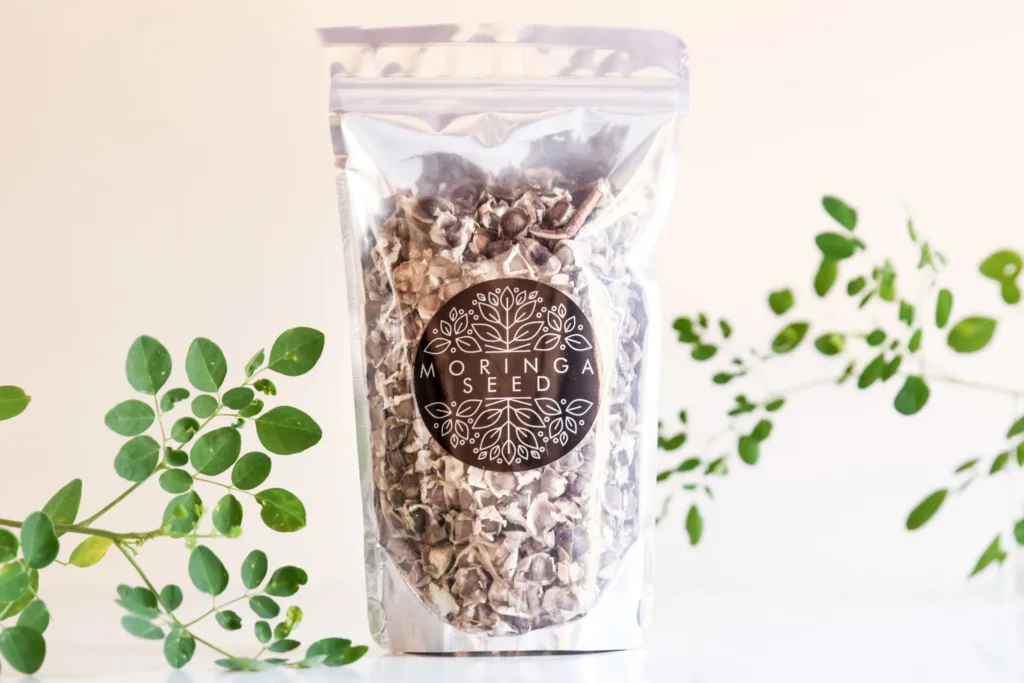
Moringa oleifera seed packets, tightly sealed. (Source: healthislife.co.za)
To summarise: Moringa is a versatile crop that can survive in a wide range of climates and soil conditions because it is perennial and drought-resistant. In light of impending climate change, moringa can serve as a practical alternative crop for people living in rural areas. Many people can reap the benefits from encouraging its cultivation, food product use, and consumption.
References
Mashamaite, C.V., Pieterse, P.J., Mothapo, P.N., and Phiri, E.E. (2021) Moringa oleifera in South Africa: A review on its production, growing conditions and consumption as a food source. South African Journal of Science. Issue 117(3/4), Art. #8689. Available at: https://journals.co.za/doi/pdf/10.17159/sajs.2021/8689

